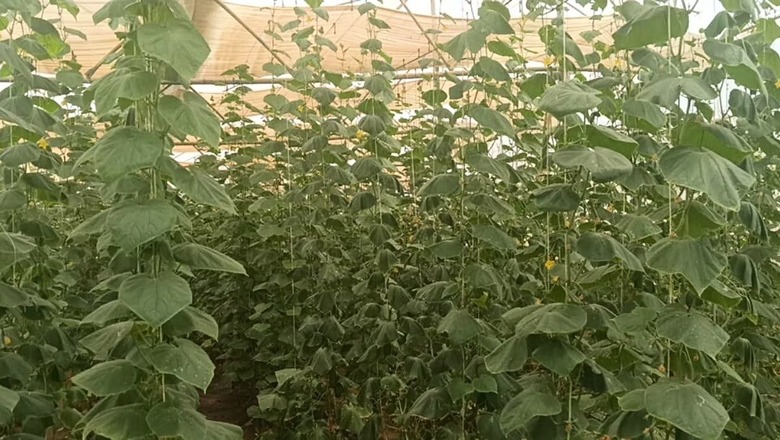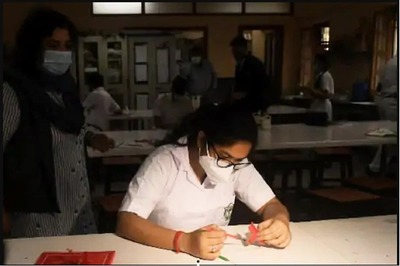
views
Two farmers named Sivananda and Manjunath from Koppa village, Uttara Kannada district, Karnataka had stirred the headlines for cultivating a cucumber crop in a polyhouse in 2022. A polyhouse is the most demanding kind of greenhouse with a structure made up of galvanised iron with a covering material of UV stabilised poly film. According to Local 18 Kannada, Sivananda is Manjunath’s father-in-law. Earlier, both farmers cultivated coloured capsicum, but then they discontinued the business due to the non-availability of the market for these products. Then, both came across the need for cucumber in a nearby colony and then embarked on the need to cultivate these foods. Now, they have a well-grown cucumber plantation, comprising abundant pieces to earn a substantial income. In an area of 10 square miles, both are growing produce weighing 8 quintals to 1 tonne per month and earn Rs 28,000-Rs 30,000 monthly.
No extra attention is required for this crop if the caretakers ensure the maintenance of this crop along with proper cleaning of the weeds. It grows well in humid climates along with less water and is sold at Rs 35 per kilogram. Cucumber crops are quite tall and need proper spacing between the rows of crops. A good amount of spacing is essential for the quicker process of gardening. There are no right or wrong measurements when it comes to making space, but the good ones surely make a difference. Good spacing is at the balance point of allowing enough room for successful growth and harvest without wasting growing space.
The only concern for Sivananda and Manjunath seems to be the half-eaten leaves in their polyhouse. It indicates insects like weevils, larger caterpillars, grasshoppers and katydids are eating leaves and causing injury to plants. Steps like crop rotation, organic pesticides and weed management can be undertaken to save crops from pests. Chemical controls, particularly synthetic organic insecticides, have been developed for nearly every insect pest. These steps need to be taken at the earliest for the growth of the plants.




















Comments
0 comment